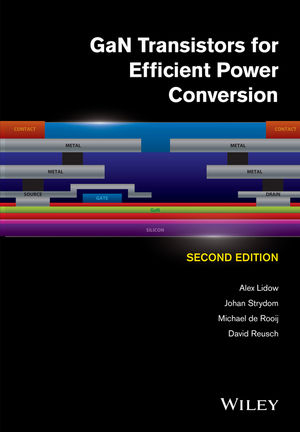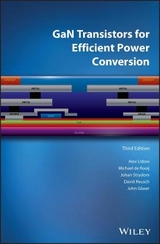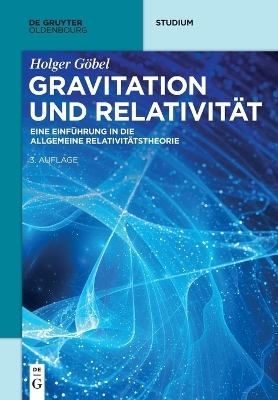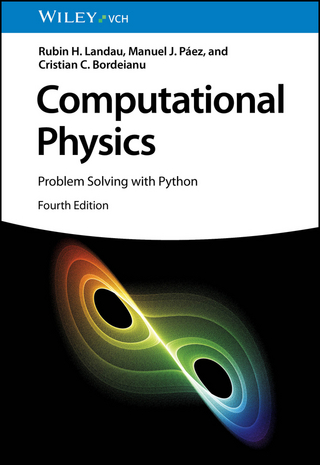
GaN Transistors for Efficient Power Conversion
John Wiley & Sons Inc (Verlag)
978-1-118-84476-2 (ISBN)
- Titel erscheint in neuer Auflage
- Artikel merken
With higher-frequency switching capabilities, GaN devices offer the chance to increase efficiency in existing applications such as DC DC conversion, while opening possibilities for new applications including wireless power transfer and envelope tracking. This book is an essential learning tool and reference guide to enable power conversion engineers to design energy-efficient, smaller and more cost-effective products using GaN transistors. Key features: * Written by leaders in the power semiconductor field and industry pioneers in GaN power transistor technology and applications. * Contains useful discussions on device circuit interactions, which are highly valuable since the new and high performance GaN power transistors require thoughtfully designed drive/control circuits in order to fully achieve their performance potential. * Features practical guidance on formulating specific circuit designs when constructing power conversion systems using GaN transistors see companion website for further details. * A valuable learning resource for professional engineers and systems designers needing to fully understand new devices as well as electrical engineering students.
Alex Lidow is CEO of Efficient Power Conversion Corporation (EPC). Prior to founding EPC, Dr. Lidow was CEO of International Rectifier Corporation. A co-inventor of the HEXFET power MOSFET, Dr. Lidow holds many patents in power semiconductor technology and has authored numerous publications on related subjects. Lidow earned his Bachelor of Science degree from Caltech in 1975 and his Ph.D. from Stanford in 1977. Johan Strydom is Vice President, Applications at EPC Corporation. He received his Ph.D. from the Rand Afrikaans University, South Africa in 2001. From 1999 to 2002 he worked as a post-doctoral researcher at the Center for Power Electronics (CPES), Virginia Tech. Dr. Strydom held various application engineering positions at International Rectifier Corporation and Linear Technology Corporation, working on DC-DC converters, motor drives, and class-D audio. Dr. Michael A. de Rooij is Executive Director of Applications Engineering at Efficient Power Conversion Corporation (EPC). Prior to joining EPC he worked at Windspire Energy where he helped develop the next generation of small vertical-axis wind turbine inverters. In addition, Dr. de Rooij has worked as a Senior Engineer at the GE Global Research Center. Dr. de Rooij s research interests and activities include, solid-state high-frequency power converters and devices, utility applications of power electronics, uninterruptible power supplies, integration of power electronic converters, power electronic packaging, induction heating, photovoltaic converters, Magnetic Resonance Imaging (MRI) Systems and gate drivers with protection features. Dr. de Rooij is a Senior Member of the IEEE. He received his Ph.D. from the Rand Afrikaans University (now called The University of Johannesburg), South Africa. David Reusch is Director, Applications at EPC Corporation. Dr. Reusch earned a doctorate in electrical engineering from Virginia Tech, where he also earned his bachelor s and master s degrees. While working on his Ph.D. he was a Bradley Fellow at the Center for Power Electronics Systems (CPES). Dr. Reusch has first-hand experience designing with GaN transistors to meet the demands for lower loss and higher power density in power converters. He is active in IEEE organizations and during the last several years has published papers at APEC and ECCE conferences.
Foreword xiii Acknowledgments xv 1 GaN Technology Overview 1 1.1 Silicon Power MOSFETs 1976 2010 1 1.2 The GaN Journey Begins 2 1.3 Why Gallium Nitride? 2 1.3.1 Band Gap (Eg) 3 1.3.2 Critical Field (Ecrit) 3 1.3.3 On-Resistance (RDS(on)) 4 1.3.4 The Two-Dimensional Electron Gas 4 1.4 The Basic GaN Transistor Structure 6 1.4.1 Recessed Gate Enhancement-Mode Structure 7 1.4.2 Implanted Gate Enhancement-Mode Structure 7 1.4.3 pGaN Gate Enhancement-Mode Structure 8 1.4.4 Cascode Hybrid Enhancement-Mode Structure 8 1.4.5 Reverse Conduction in HEMT Transistors 10 1.5 Building a GaN Transistor 10 1.5.1 Substrate Material Selection 10 1.5.2 Growing the Heteroepitaxy 11 1.5.3 Processing the Wafer 12 1.5.4 Making Electrical Connection to the Outside World 14 1.6 Summary 14 References 17 2 GaN Transistor Electrical Characteristics 19 2.1 Introduction 19 2.2 Key Device Parameters 19 2.2.1 Breakdown Voltage (BVDSS) and Leakage Current (IDSS) 19 2.2.2 On-Resistance (RDS(on)) 24 2.2.3 Threshold Voltage (VGS(th) or Vth) 26 2.3 Capacitance and Charge 27 2.4 Reverse Conduction 31 2.5 Thermal Resistance 33 2.6 Transient Thermal Impedance 36 2.7 Summary 37 References 38 3 Driving GaN Transistors 39 3.1 Introduction 39 3.2 Gate Drive Voltage 41 3.3 Bootstrapping and Floating Supplies 43 3.4 dv/dt Immunity 44 3.5 di/dt Immunity 47 3.6 Ground Bounce 48 3.7 Common Mode Current 50 3.8 Gate Driver Edge Rate 51 3.9 Driving Cascode GaN Devices 51 3.10 Summary 53 References 53 4 Layout Considerations for GaN Transistor Circuits 55 4.1 Introduction 55 4.2 Minimizing Parasitic Inductance 55 4.3 Conventional Power Loop Designs 58 4.4 Optimizing the Power Loop 60 4.5 Paralleling GaN Transistors 61 4.5.1 Paralleling GaN Transistors for a Single Switch 61 4.5.2 Paralleling GaN Transistors for Half-Bridge Applications 65 4.6 Summary 69 References 69 5 Modeling and Measurement of GaN Transistors 70 5.1 Introduction 70 5.2 Electrical Modeling 70 5.2.1 Basic Modeling 70 5.2.2 Limitations of Basic Modeling 73 5.2.3 Limitations of Circuit Modeling 75 5.3 Thermal Modeling 76 5.3.1 Improving Thermal Performance 77 5.3.2 Modeling of Multiple Die 79 5.3.3 Modeling of Complex Systems 82 5.4 Measuring GaN Transistor Performance 83 5.4.1 Voltage Measurement Requirements 83 5.4.2 Current Measurement Requirement 85 5.5 Summary 87 References 87 6 Hard-Switching Topologies 89 6.1 Introduction 89 6.2 Hard-Switching Loss Analysis 89 6.2.1 Switching Losses 91 6.2.2 Output Capacitance (COSS) Losses 96 6.2.3 Gate Charge (QG) Losses 96 6.2.4 Reverse Conduction Losses (PSD) 97 6.2.5 Reverse Recovery (QRR) Losses 99 6.2.6 Total Hard-Switching Losses 99 6.2.7 Hard-Switching Figure of Merit 100 6.3 External Factors Impacting Hard-Switching Losses 101 6.3.1 Impact of Common-Source Inductance 101 6.3.2 Impact of High Frequency Power-Loop Inductance on Device Losses 103 6.4 Reducing Body Diode Conduction Losses in GaN Transistors 106 6.5 Frequency Impact on Magnetics 109 6.5.1 Transformers 109 6.5.2 Inductors 110 6.6 Buck Converter Example 110 6.6.1 Output Capacitance Losses 112 6.6.2 Gate Losses (PG) 114 6.6.3 Body Diode Conduction Losses (PSD) 117 6.6.4 Switching Losses (Psw) 119 6.6.5 Total Dynamic Losses (PDynamic) 120 6.6.6 Conduction Losses (PConduction) 120 6.6.7 Total Device Hard-Switching Losses (PHS) 121 6.6.8 Inductor Losses (PL) 122 6.6.9 Total Buck Converter Estimated Losses (PTotal) 122 6.6.10 Buck Converter Loss Analysis Accounting for Common Source Inductance 123 6.6.11 Experimental Results for the Buck Converter 125 6.7 Summary 126 References 126 7 Resonant and Soft-Switching Converters 128 7.1 Introduction 128 7.2 Resonant and Soft-Switching Techniques 128 7.2.1 Zero-Voltage and Zero-Current Switching 128 7.2.2 Resonant DC-DC Converters 129 7.2.3 Resonant Network Combinations 130 7.2.4 Resonant Network Operating Principles 131 7.2.5 Resonant Switching Cells 132 7.2.6 Soft-Switching DC-DC Converters 133 7.3 Key Device Parameters for Resonant and Soft-Switching Applications 133 7.3.1 Output Charge (QOSS) 133 7.3.2 Determining Output Charge from Manufacturers Datasheet 134 7.3.3 Comparing Output Charge of GaN Transistors and Si MOSFETs 135 7.3.4 Gate Charge (QG) 136 7.3.5 Determining Gate Charge for Resonant and Soft-Switching Applications 136 7.3.6 Comparing Gate Charge of GaN Transistors and Si MOSFETs 138 7.3.7 Comparing Performance Metrics of GaN Transistors and Si MOSFETs 138 7.4 High-Frequency Resonant Bus Converter Example 139 7.4.1 Resonant GaN and Si Bus Converter Designs 142 7.4.2 GaN and Si Device Comparison 143 7.4.3 Zero-Voltage Switching Transition 144 7.4.4 Efficiency and Power Loss Comparison 145 7.5 Summary 148 References 148 8 RF Performance 150 8.1 Introduction 150 8.2 Differences Between RF and Switching Transistors 151 8.3 RF Basics 153 8.4 RF Transistor Metrics 154 8.4.1 Determining the High-Frequency Characteristics of RF FETs 155 8.4.2 Pulse Testing for Thermal Considerations 156 8.4.3 Analyzing the S-Parameters 158 8.5 Amplifier Design Using Small-Signal S-Parameters 161 8.5.1 Conditionally Stable Bilateral Transistor Amplifier Design 161 8.6 Amplifier Design Example 162 8.6.1 Matching and Bias Tee Network Design 165 8.6.2 Experimental Verification 168 8.7 Summary 170 References 170 9 GaN Transistors for Space Applications 172 9.1 Introduction 172 9.2 Failure Mechanisms 172 9.3 Standards for Radiation Exposure and Tolerance 173 9.4 Gamma Radiation Tolerance 173 9.5 Single-Event Effects (SEE) Testing 175 9.6 Performance Comparison between GaN Transistors and Rad-Hard Si MOSFETs 176 9.7 Summary 177 References 177 10 Application Examples 179 10.1 Introduction 179 10.2 Non-Isolated DC-DC Converters 179 10.2.1 12 VIN 1.2 VOUT Buck Converter 180 10.2.2 28 VIN 3.3 VOUT Point-of-Load Module 184 10.2.3 48 VIN 12 VOUT Buck Converter with Parallel GaN Transistors for High-Current Applications 185 10.3 Isolated DC-DC Converters 191 10.3.1 Hard-Switching Intermediate Bus Converters 192 10.3.2 A 400 V LLC Resonant Converter 203 10.4 Class-D Audio 204 10.4.1 Total Harmonic Distortion (THD) 204 10.4.2 Damping Factor (DF) 205 10.4.3 Class-D Audio Amplifier Example 206 10.5 Envelope Tracking 208 10.5.1 High-Frequency GaN Transistors 209 10.5.2 Envelope Tracking Experimental Results 211 10.5.3 Gate Driver Limitations 211 10.6 Highly Resonant Wireless Energy Transfer 214 10.6.1 Design Considerations for Wireless Energy Transfer 216 10.6.2 Wireless Energy Transfer Examples 217 10.6.3 Summary of Design Considerations for Wireless Energy Transfer 224 10.7 LiDAR and Pulsed Laser Applications 224 10.8 Power Factor Correction (PFC) 226 10.9 Motor Drive and Photovoltaic Inverters 227 10.10 Summary 228 References 228 11 Replacing Silicon Power MOSFETs 232 11.1 What Controls the Rate of Adoption? 232 11.2 New Capabilities Enabled by GaN Transistors 232 11.3 GaN Transistors are Easy to Use 233 11.4 Cost vs. Time 234 11.4.1 Starting Material 234 11.4.2 Epitaxial Growth 234 11.4.3 Wafer Fabrication 235 11.4.4 Test and Assembly 235 11.5 GaN Transistors are Reliable 235 11.6 Future Directions 236 11.7 Conclusion 237 References 237 Appendix 239 Index 246
| Erscheint lt. Verlag | 15.9.2014 |
|---|---|
| Verlagsort | New York |
| Sprache | englisch |
| Maße | 179 x 256 mm |
| Gewicht | 640 g |
| Themenwelt | Naturwissenschaften ► Physik / Astronomie |
| Technik ► Elektrotechnik / Energietechnik | |
| ISBN-10 | 1-118-84476-9 / 1118844769 |
| ISBN-13 | 978-1-118-84476-2 / 9781118844762 |
| Zustand | Neuware |
| Informationen gemäß Produktsicherheitsverordnung (GPSR) | |
| Haben Sie eine Frage zum Produkt? |
aus dem Bereich



